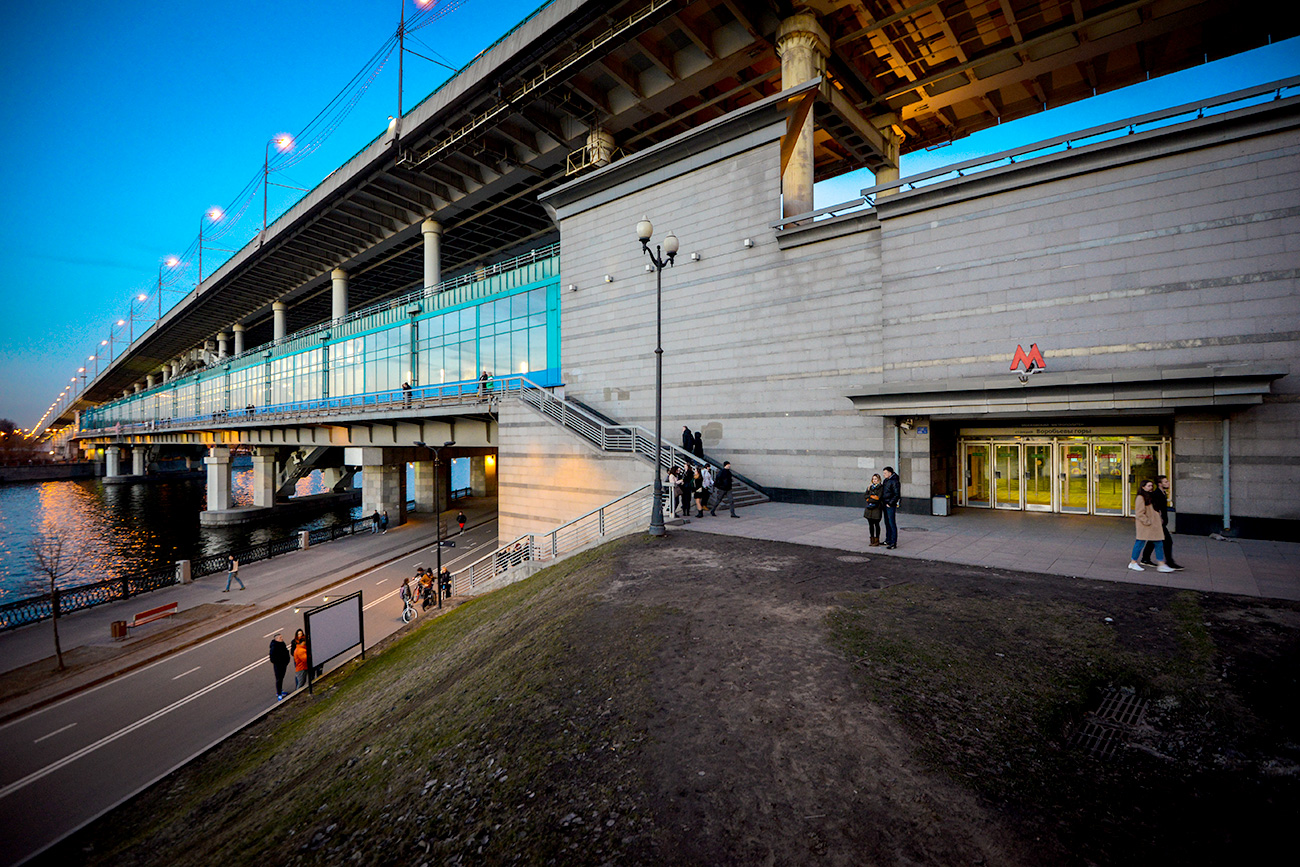
A view of Vorobyovy Gory Station of the Moscow Metro.
Nikolai Galkin/TASS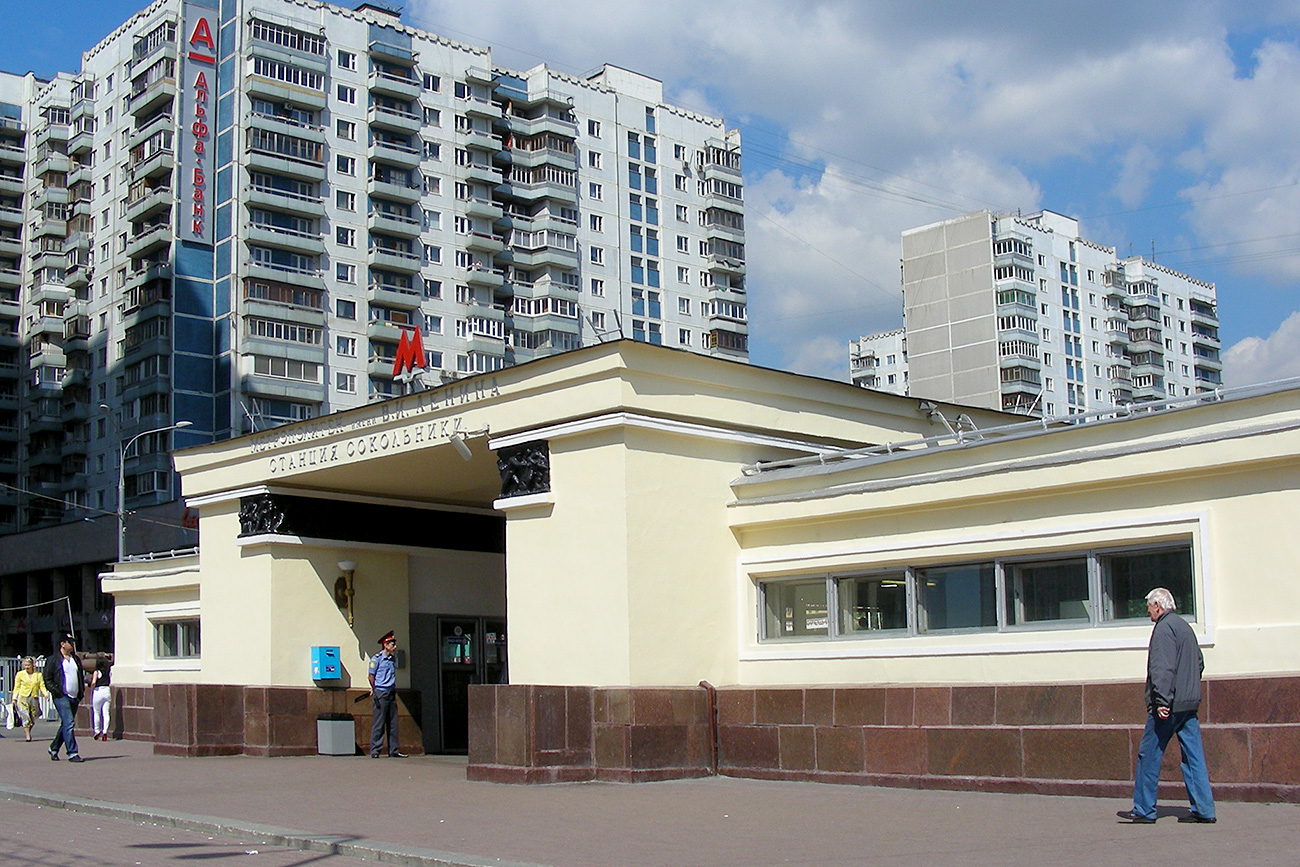 Entrance lobby of Sokolniki station. Source: Legion Media
Entrance lobby of Sokolniki station. Source: Legion Media
On May 15, 1935, the first train of the Moscow Metro set off from Sokolniki to Park Kultury. Sokolniki is named after the area, where hunting houses - in which were kept the Tsar’s falcons - were built in the 17th century. “Sokol” means falcon in Russian.
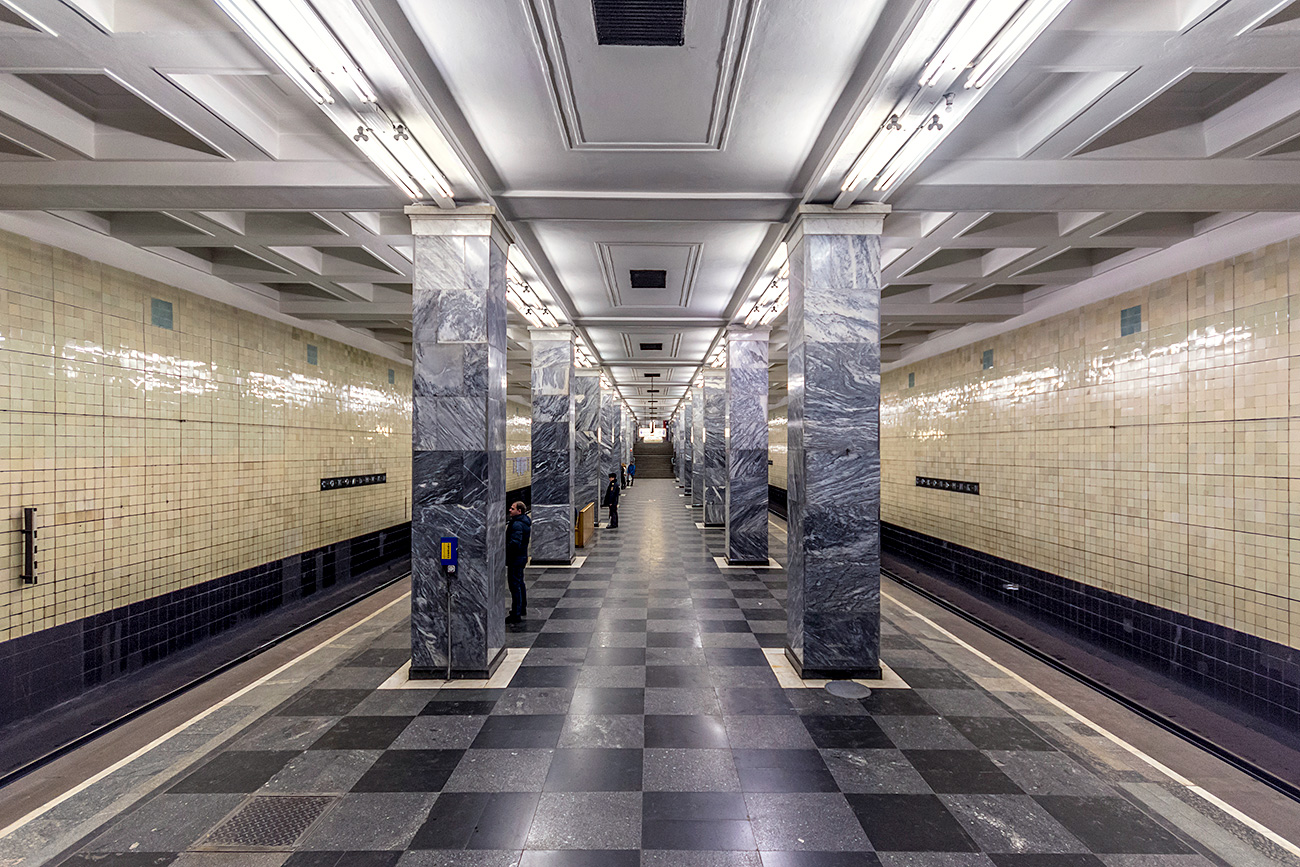 Main hall of the Sokolniki station. Source: Alex 'Florstein' Fedorov (CC BY-SA 4.0)
Main hall of the Sokolniki station. Source: Alex 'Florstein' Fedorov (CC BY-SA 4.0)
The square columns in the main hall of the station are covered with stunning grey and blue Ufaley Ural marble, and the ticket hall is decorated with Georgian marble. The entrance lobby is designed in a pseudo-antique style with bas-relief panels. This particular style is common in the Russian estates of the 16th to 19th centuries.
 Sokolniki metro station. Source: Antares 610
Sokolniki metro station. Source: Antares 610
A model of the station was awarded a Grand Prix at the 1937 Paris World’s Fair.
 A view of Vorobyovy Gory station. Source: Nikolai Galkin/TASS
A view of Vorobyovy Gory station. Source: Nikolai Galkin/TASS
This stop was built in 1959 on a bridge over the Moskva River - the first station of its kind in Russia. It takes four minutes to walk from one end of the bridge to the other since Vorobyovy Gory is the longest metro station in Moscow, at 284 meters.
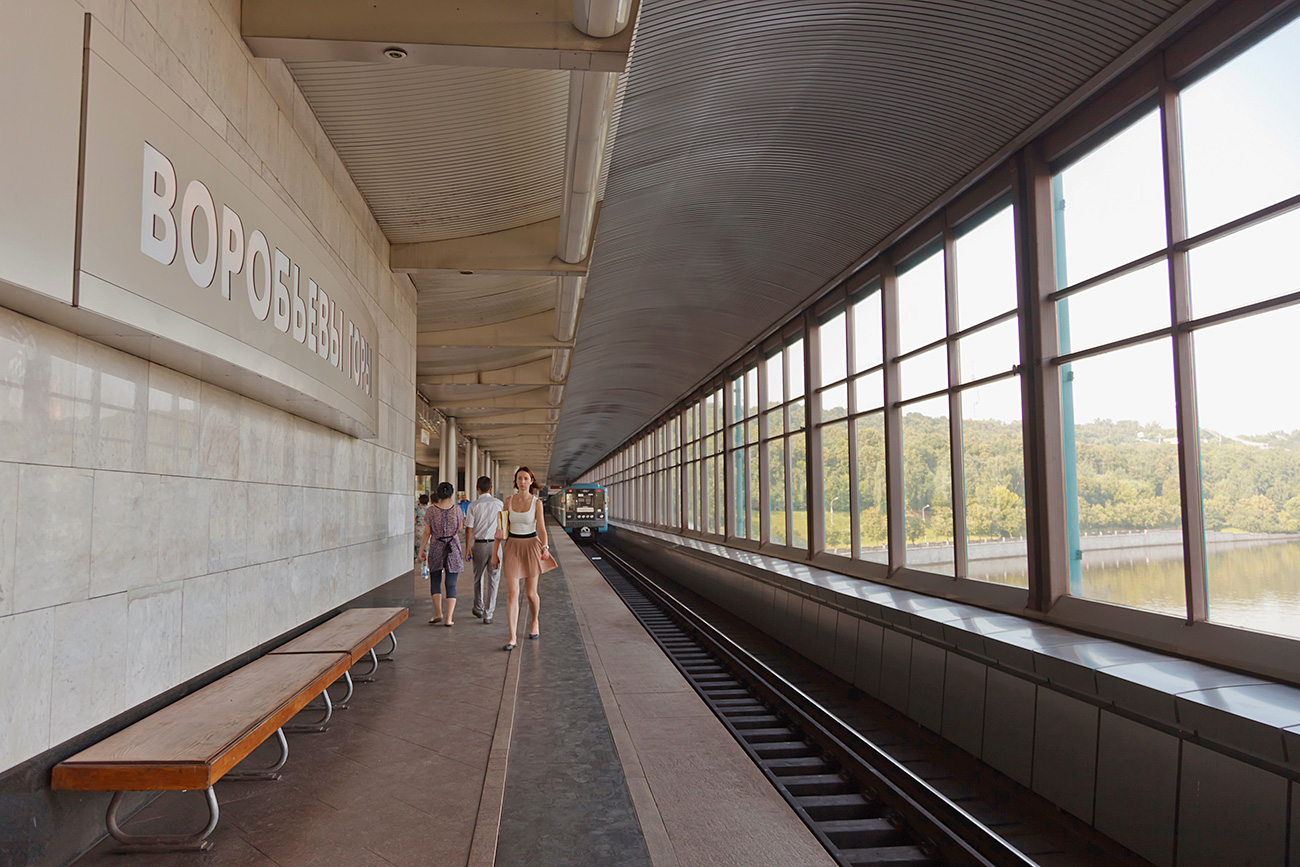 Passengers at Vorobyovy Gory station. Source: Legion Media
Passengers at Vorobyovy Gory station. Source: Legion Media
Since 2010, the metro has often been used as an exhibition hall. Porcelain, dolls, animal sculptures, and period costumes have all been displayed to the public. There have also been exhibitions dedicated to Russian achievements in sport and space exploration.
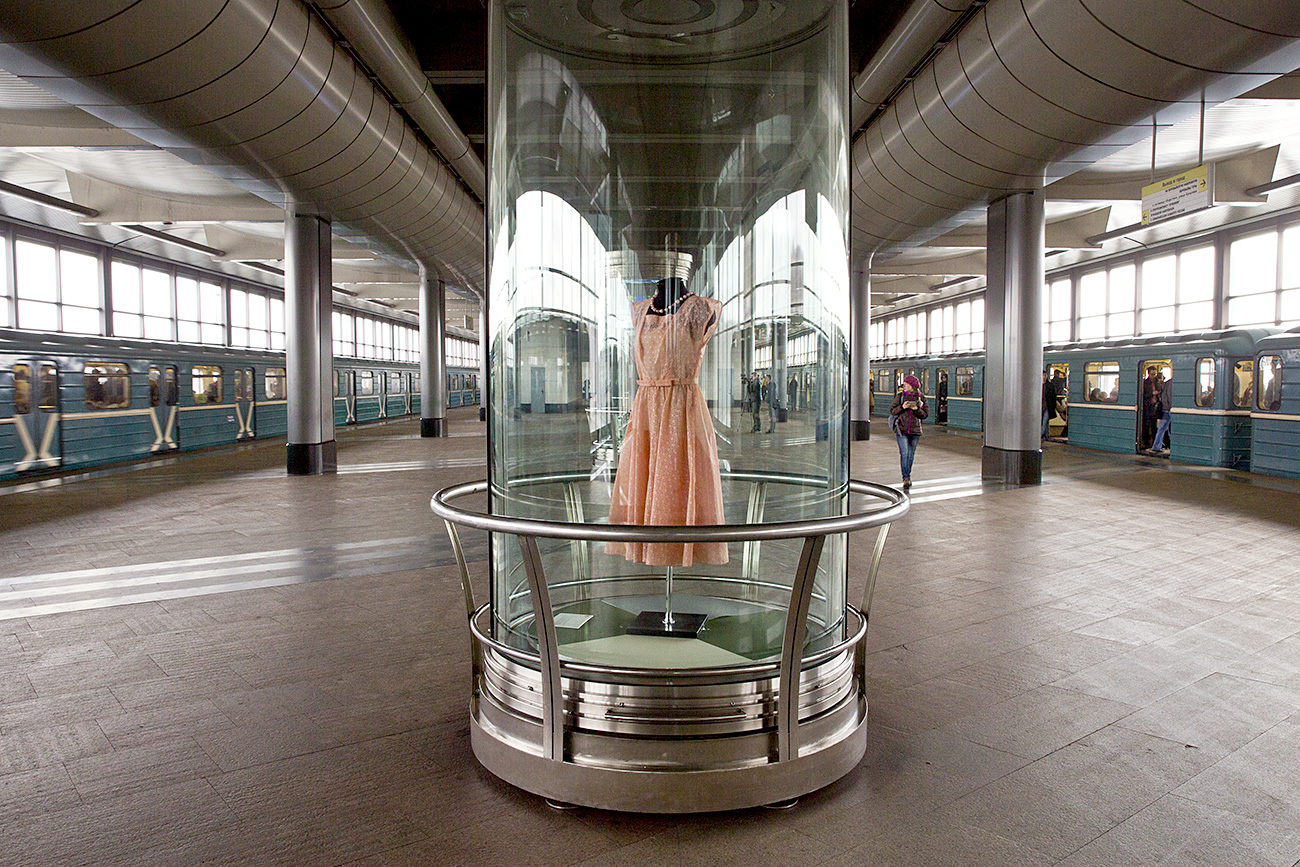 Fashion exhibition at Vorobyovy Gory station. Source: Artem Geodakyan/TASS
Fashion exhibition at Vorobyovy Gory station. Source: Artem Geodakyan/TASS
The room for the metro guard on duty is in an unusual location - it resides over the platform, like a captain's bridge on a ship. It’s a great place to soak up the view of the river and the Russian Academy of Sciences while waiting for your train to arrive - which won’t take long in Moscow.
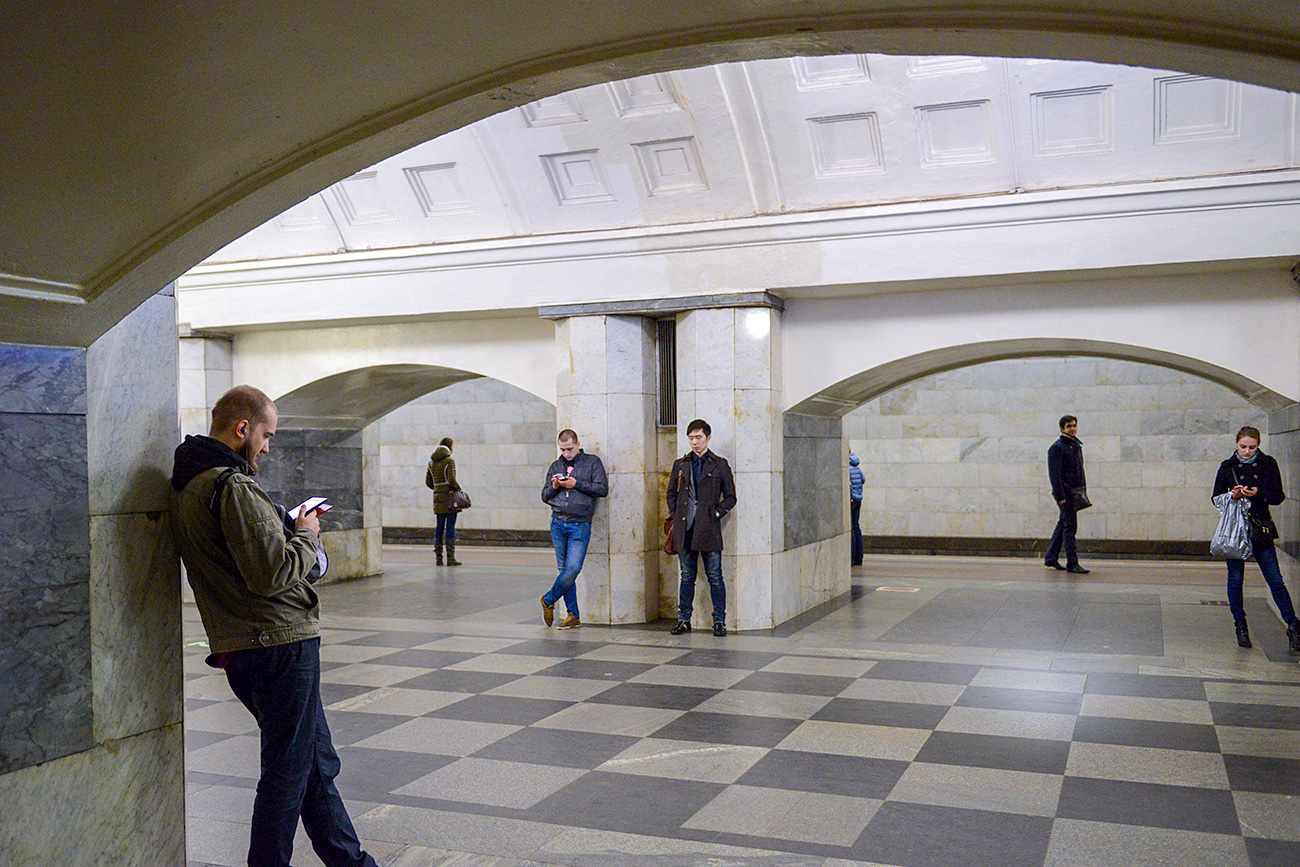 Passengers at Okhotny Ryad station. Source: Nikolai Galkin/TASS
Passengers at Okhotny Ryad station. Source: Nikolai Galkin/TASS
Opened in 1935, it became the largest underground station in the world. Okhotny Ryad has changed its name several times. It was once called “Imeni Kaganovicha” and “Prospekt Marksa.”
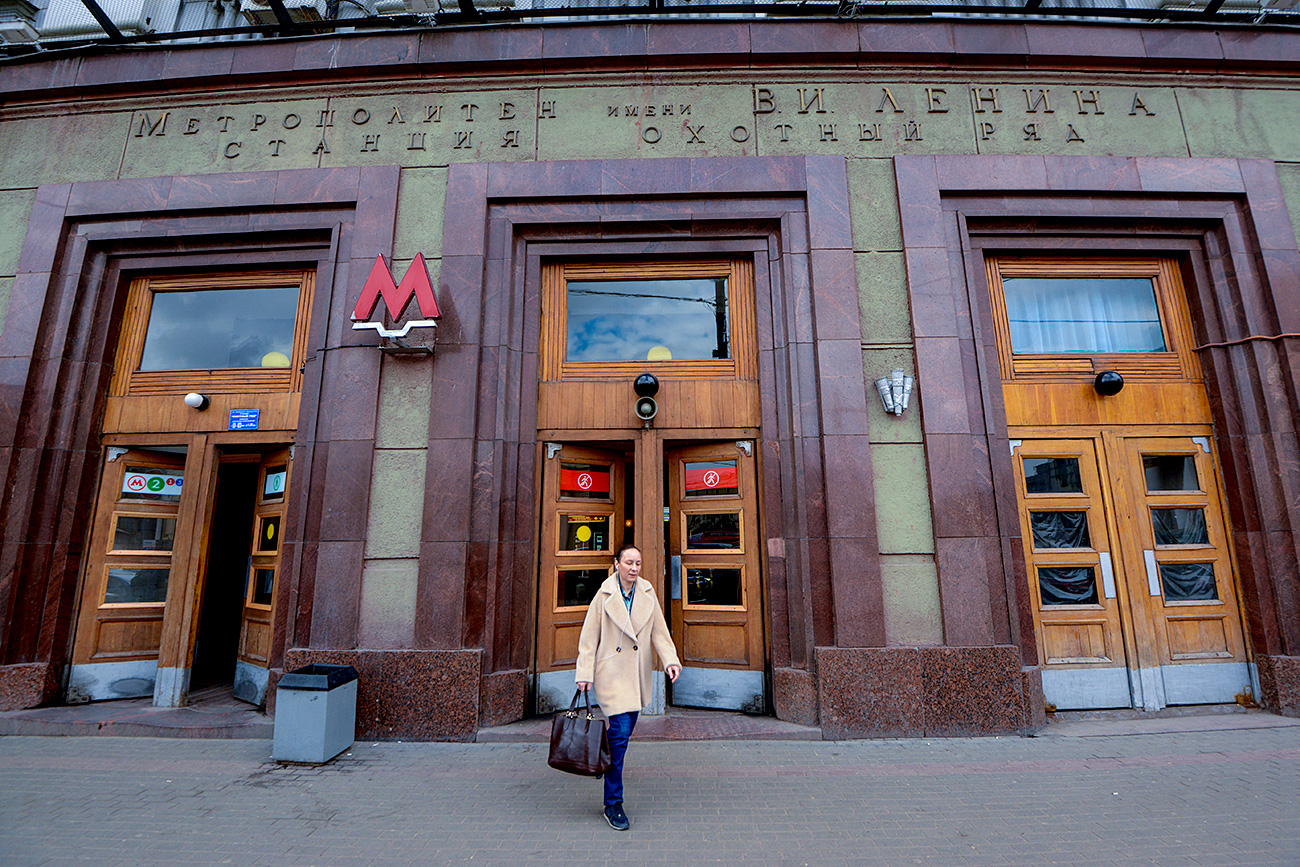 Entrance lobby of Okhotny Ryad station. Source: Nikolai Galkin/TASS
Entrance lobby of Okhotny Ryad station. Source: Nikolai Galkin/TASS
The station’s entrance leads to one of the Moscow’s main streets – Okhotny Ryad, that stretches from Manezhny Square to Teatralny Square.
 Main hall of Okhotny Ryad staion. Source: Nikolai Galkin/TASS
Main hall of Okhotny Ryad staion. Source: Nikolai Galkin/TASS
Known as the “heart of the metro” - the station is the closest to the Red Square and the Bolshoi Theatre.
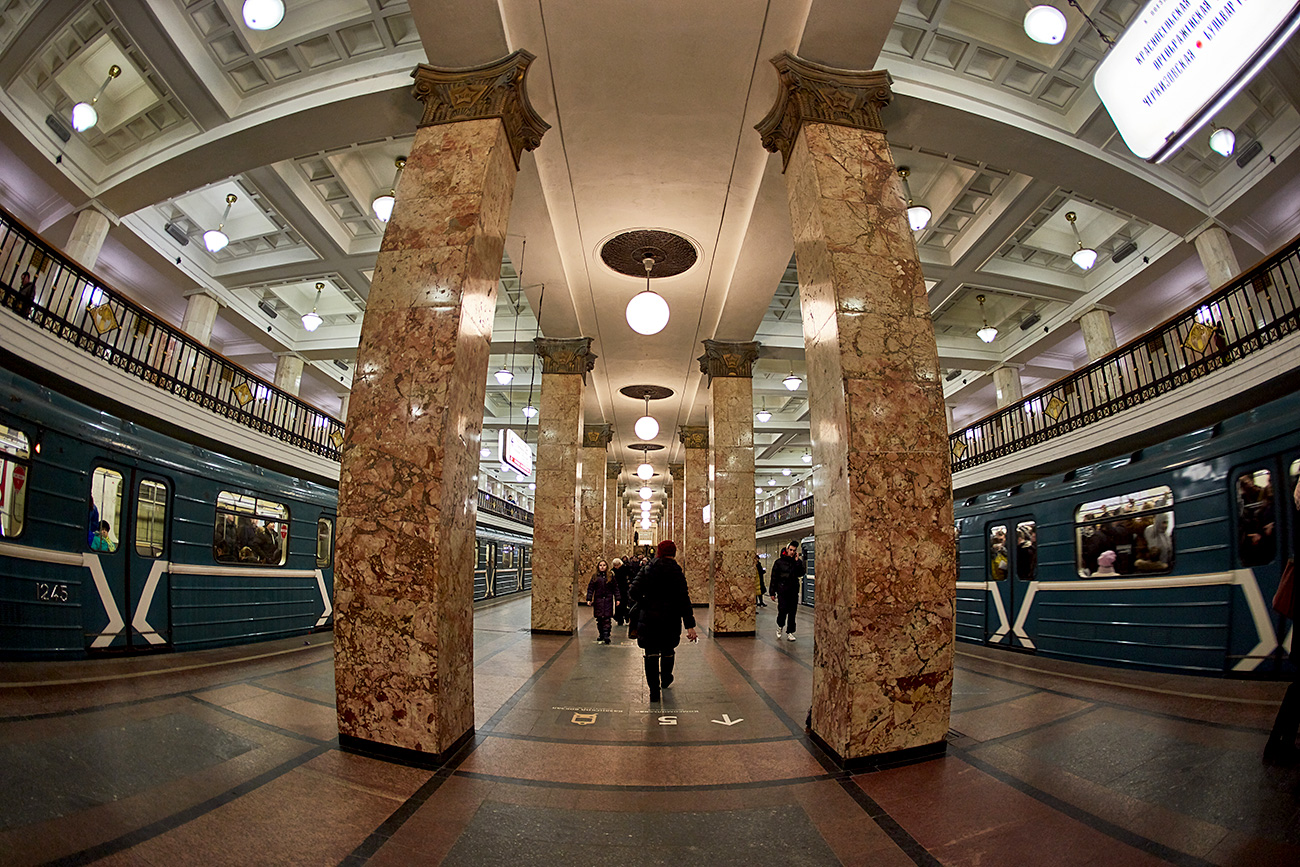 Main hall of Komsomolskaya station. Source: Vostock-Photo
Main hall of Komsomolskaya station. Source: Vostock-Photo
This is the most beautiful metro station on the Sokolnicheskaya line. The station’s lobby was decorated by the famous Russian graphic artist, sculptor, and painter Eugene Lanceray.
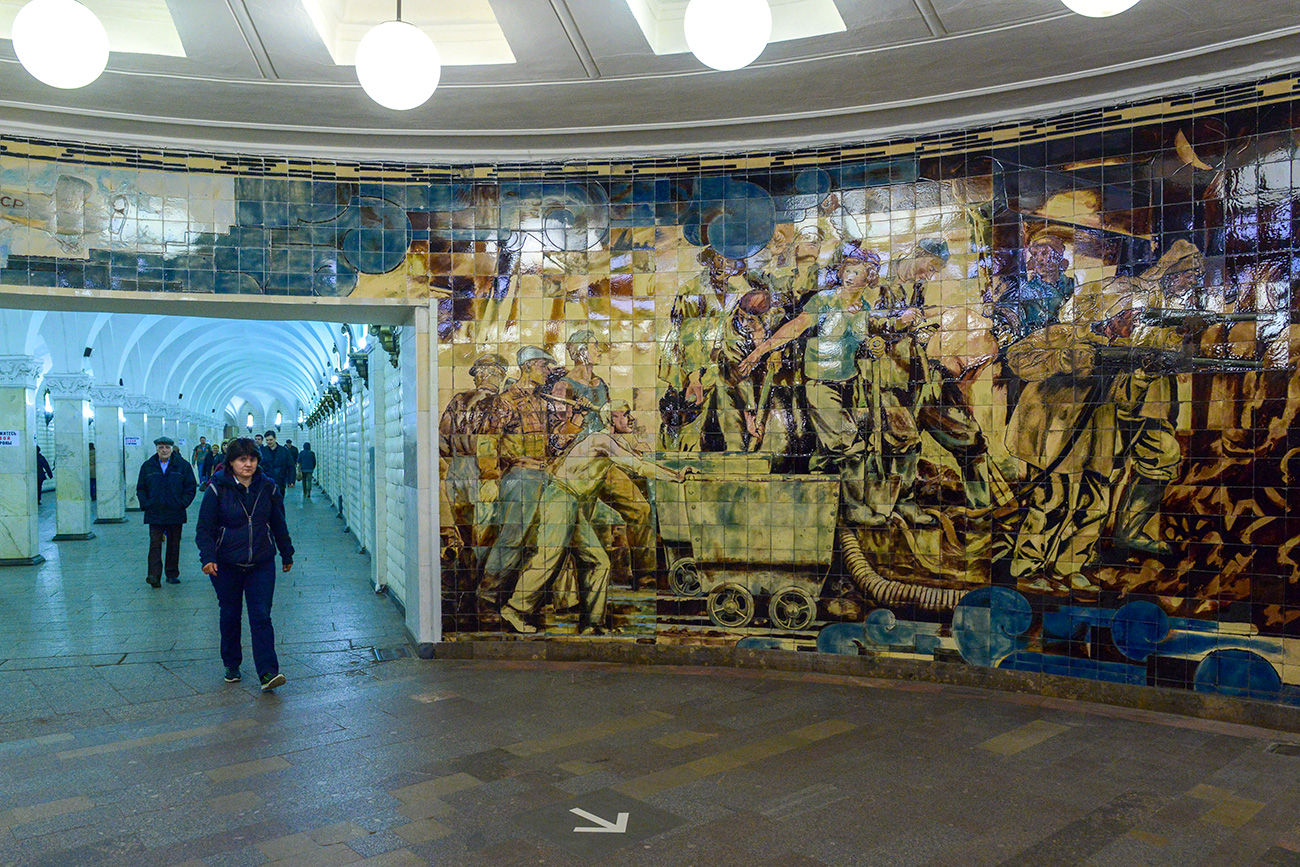 Panels of majolica tiles at Komsomolskaya station. Source: Nikolai Galkin/TASS
Panels of majolica tiles at Komsomolskaya station. Source: Nikolai Galkin/TASS
Panels of majolica tiles in the lobby portray the metro’s construction: Hard work underground. A series was planned to depict the different stages of the the underground system’s development, but only one was finished.
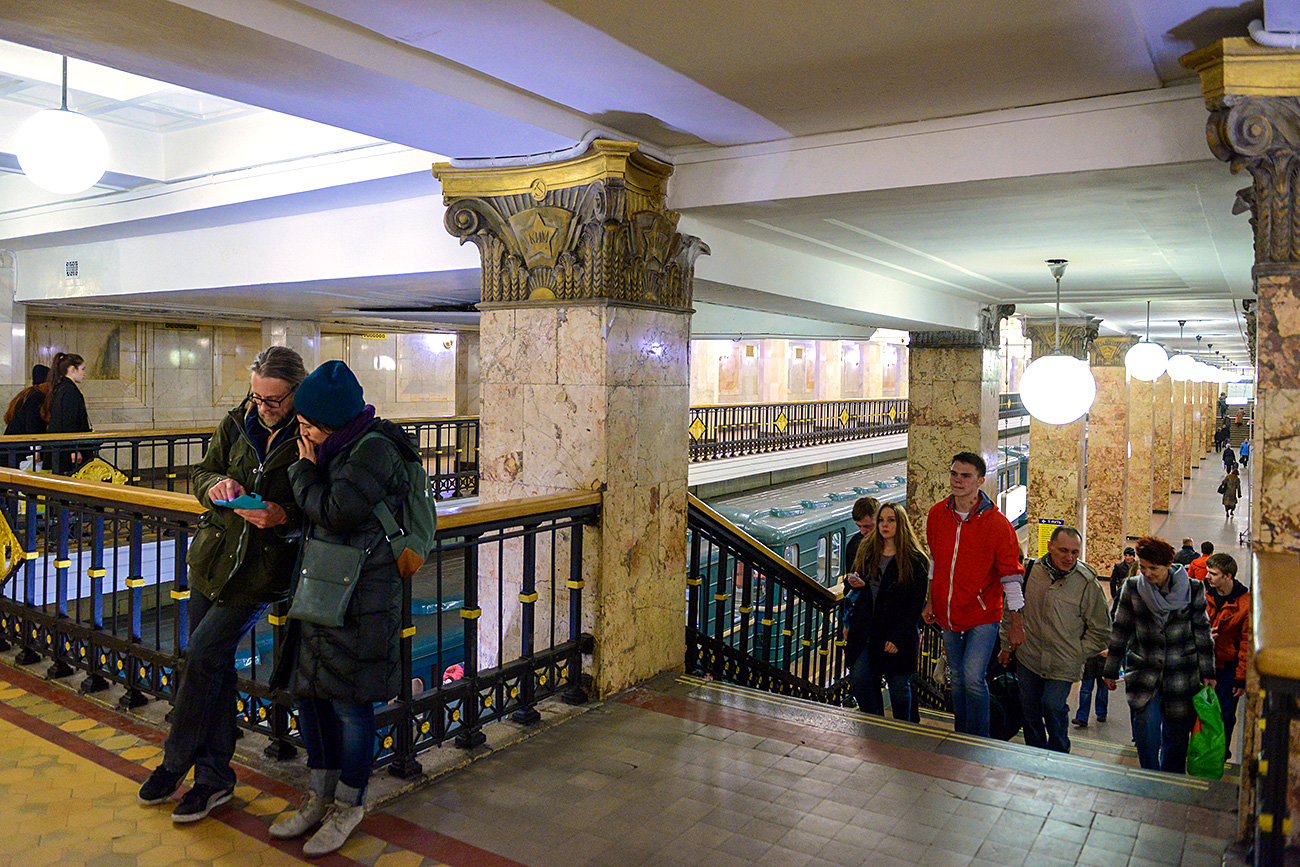 Passengers at Komsomolskaya station. Source: Nikolai Galkin/TASS
Passengers at Komsomolskaya station. Source: Nikolai Galkin/TASS
The semicircular lobby’s ceiling is supported by a massive column adorned with the hammer and sickle, stars, and ears of corn - all symbols of the Soviet Union. The capitals of the columns in the main hall also show the “KIM” emblem, which means “Communist Youth International” in Russian.
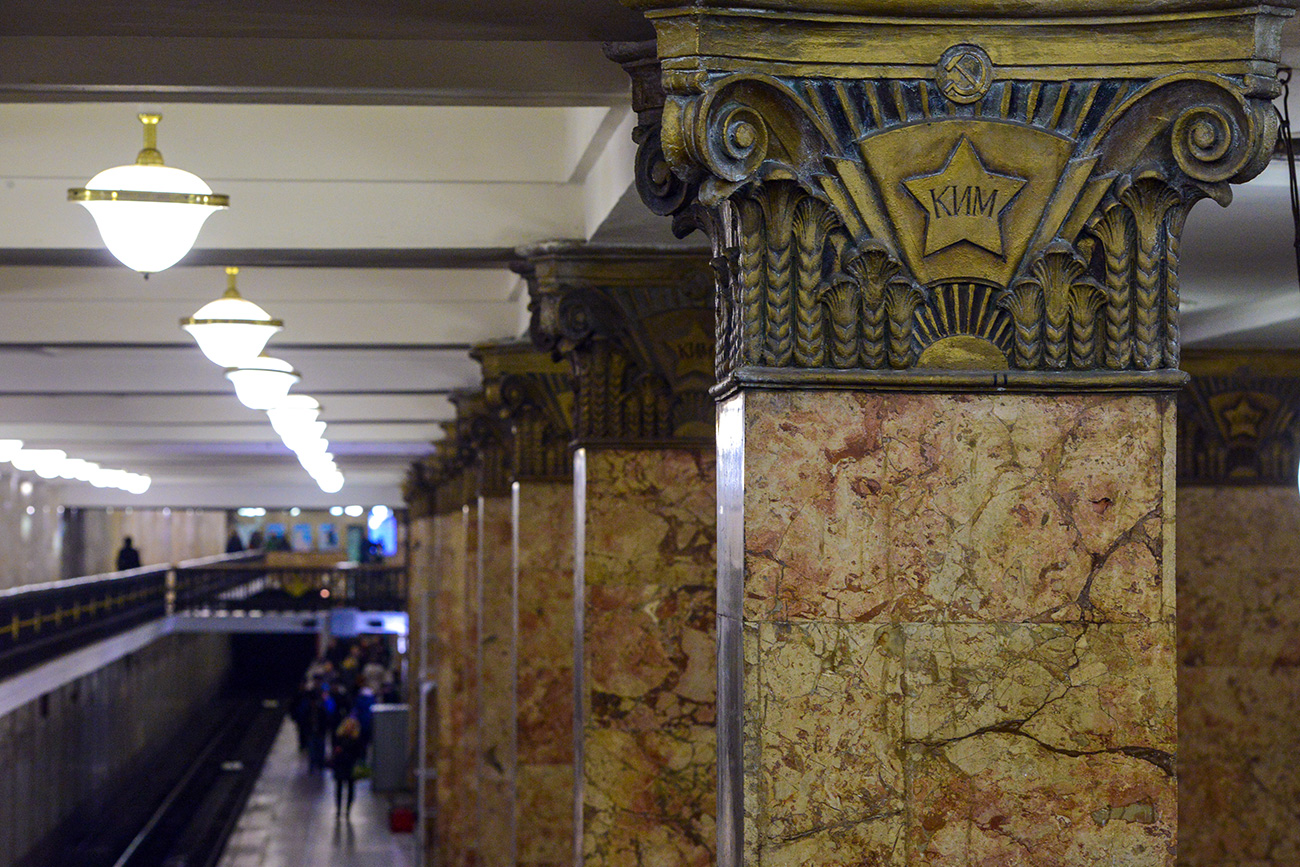 Columns at Komsomolskaya station. Source: Nikolai Galkin/TASS
Columns at Komsomolskaya station. Source: Nikolai Galkin/TASS
Upon exiting Komsomolskaya, you will find yourself in Komsomolskaya square, also known as the Three Stations Square, because three rail stations are situated there: Leningradsky, Yaroslavsky and Kazansky.
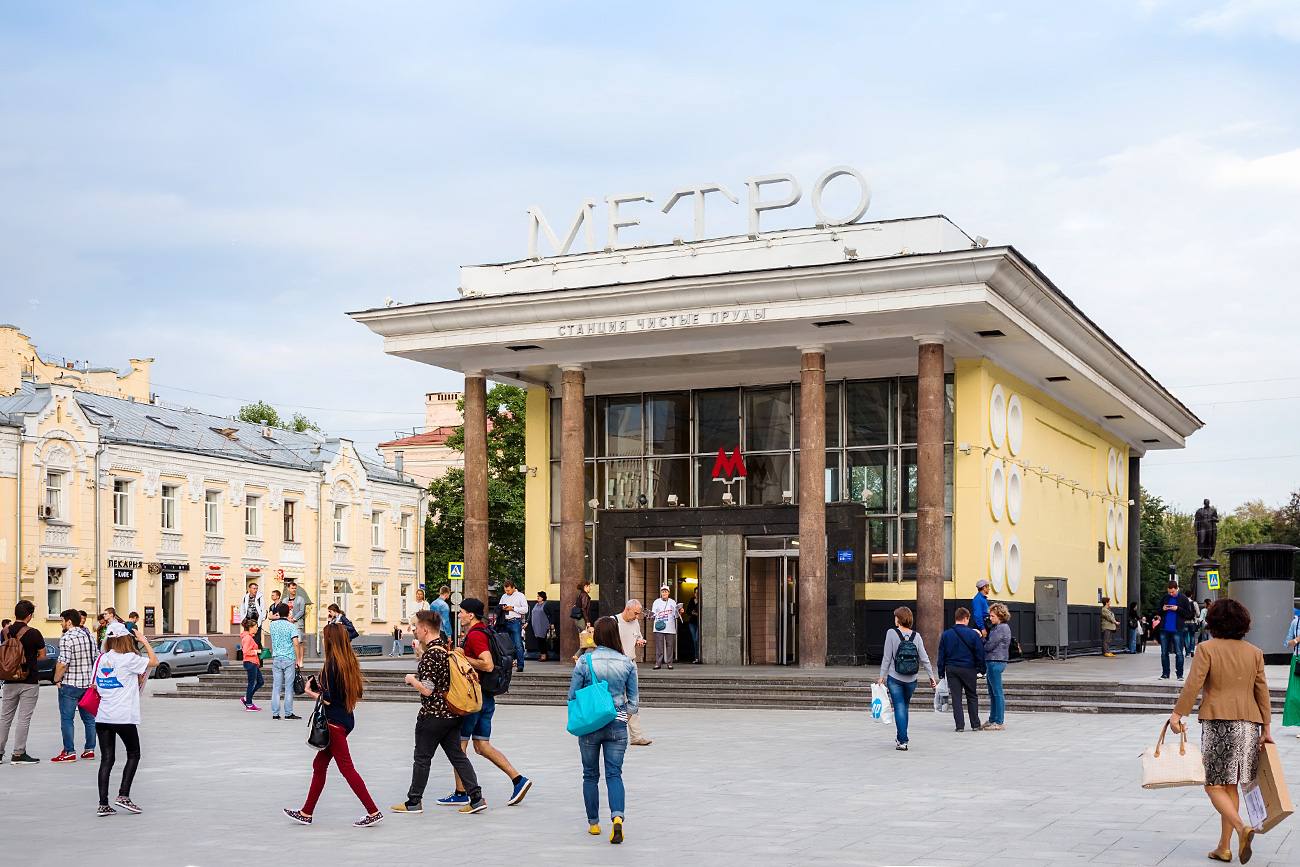 Entrance lobby of Chistye Prudy staion. Source: Vostock-Photo
Entrance lobby of Chistye Prudy staion. Source: Vostock-Photo
Until 1990 the station was called “Kirovskaya” in honor of Sergey Kirov, one of the main Soviet political leaders. There was a bronze bust of him at the end of platform, but it’s been removed.
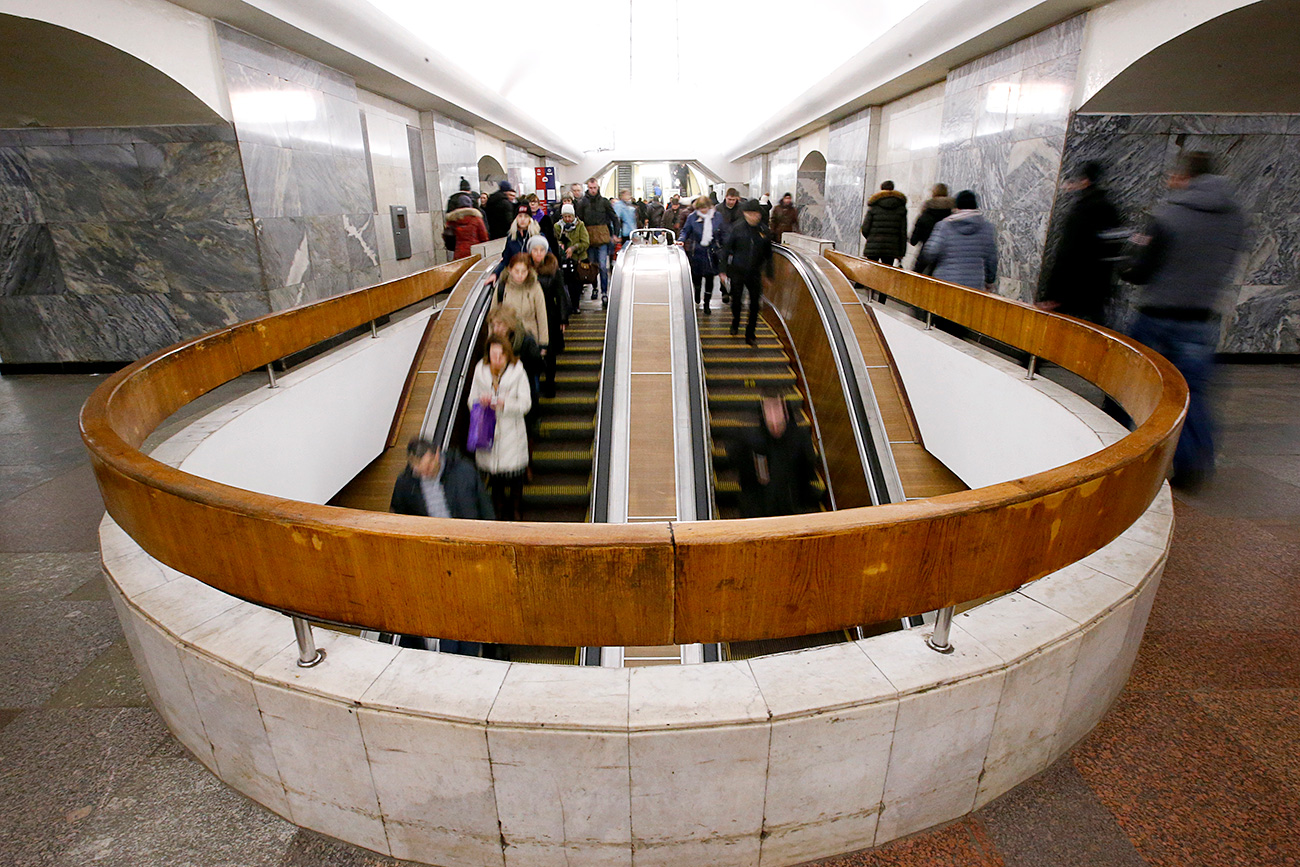 Passengers at Chistye Prudy station. Source: Reuters
Passengers at Chistye Prudy station. Source: Reuters
It’s one of the few metro stations with the old Soviet “METRO” sign above its entrance. The lobby itself was designed in the Constructivist style. During WWII, some of the General Staff and Anti-Air units were housed in the station. The trains never stopped at the station during this time.
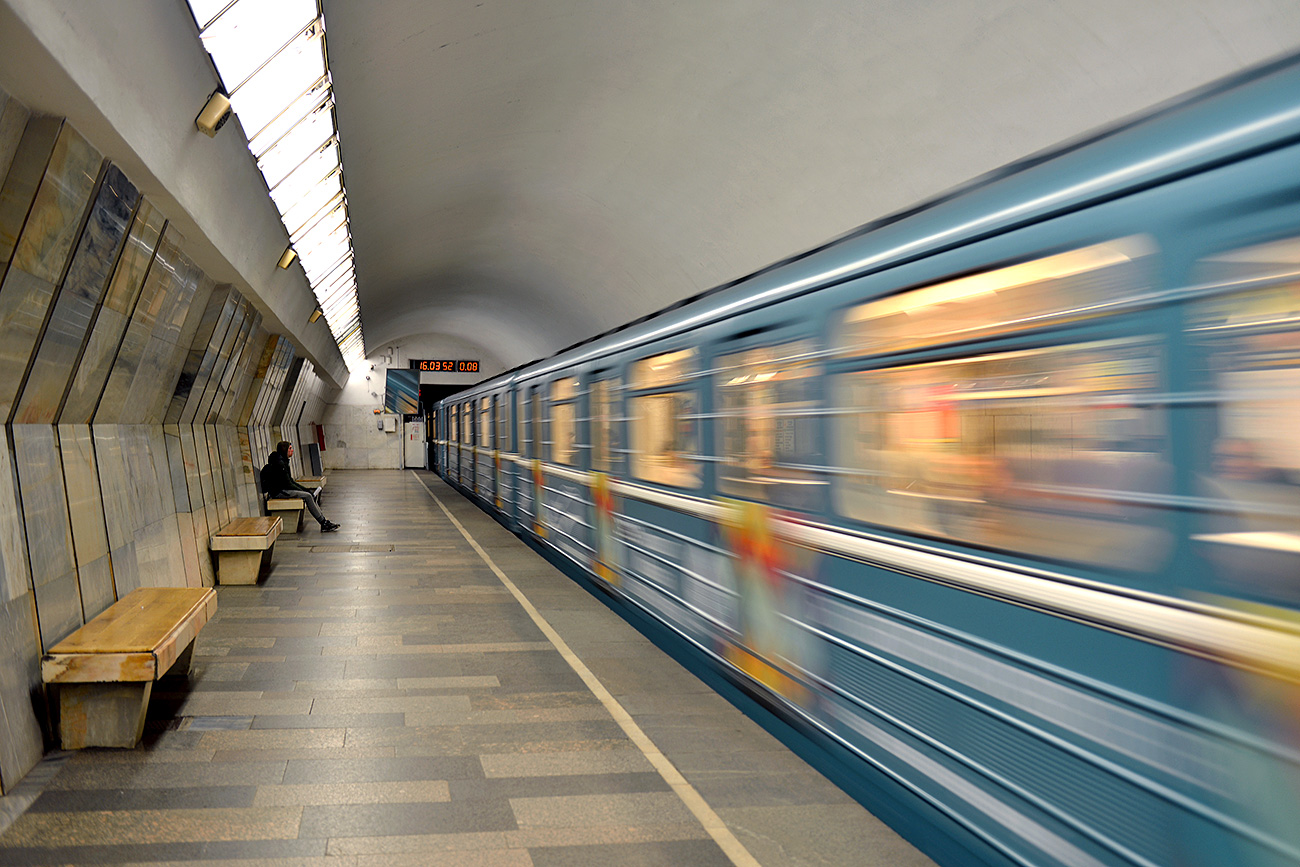 Chistye Prudy station. Source: Legion Media
Chistye Prudy station. Source: Legion Media
The entrance leads to Chistye Prudy, where Muscovites and visitors of the capital love to walk around the pond and tree-lined avenues.
If using any of Russia Beyond's content, partly or in full, always provide an active hyperlink to the original material.
Subscribe
to our newsletter!
Get the week's best stories straight to your inbox